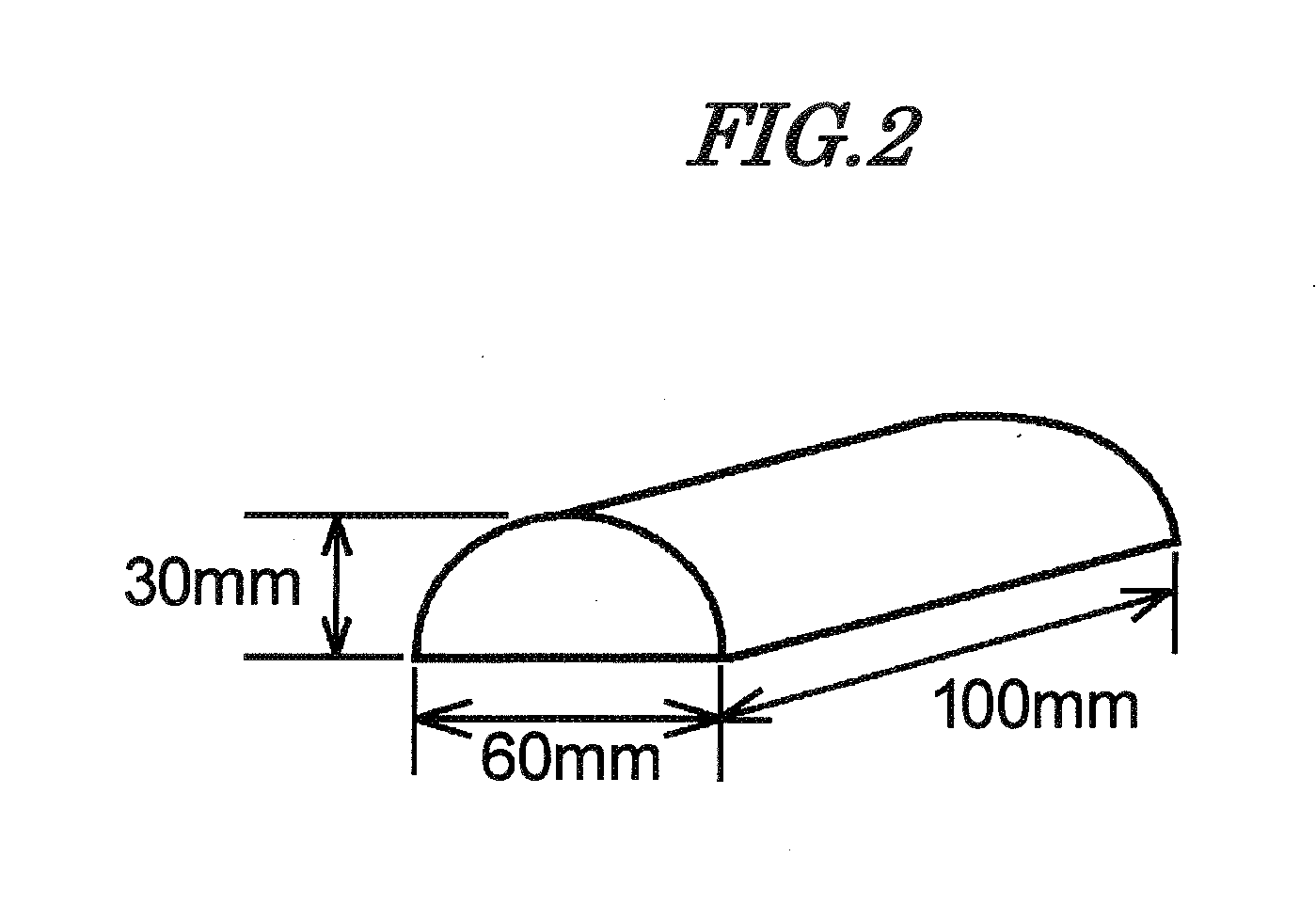Process for producing molded printed material, and molded printed material
a printing plate and printing technology, applied in the field of molded printed materials and molded printed materials, can solve the problems of expensive printing system and preparation of printing plates, inability to use color inks with ultraviolet light for decorating deep-drawn vacuum-formed products, and insufficient drying time for solvent removal by evaporation
- Summary
- Abstract
- Description
- Claims
- Application Information
AI Technical Summary
Benefits of technology
Problems solved by technology
Method used
Image
Examples
example 1
[0268]The components below were stirred using a high-speed water-cooled stirrer to give a cyan UV inkjet ink. The viscosity was 18 mPa·s.
Cyan Ink Composition
[0269]
Cyan mill base A (coloring material, polymerizable6.0partsmonomer, polymeric dispersant)N-Vinylcaprolactam (cyclic monofunctional monomer)25.0partsFancryl FA-512A (cyclic monofunctional monomer)35.4partsNK ester AMP-10G (cyclic monofunctional monomer)20.0partsFIRSTCURE ST-1 (polymerization inhibitor)0.05partsLucirin TPO (radical polymerization initiator)8.5partsBenzophenone (radical polymerization initiator)3.0partsIRGACURE 184 (radical polymerization initiator)2.0partsBYK-307 (surfactant)0.05parts
[0270]Inkjet recording was carried out using the ink composition thus obtained. The embossing test and the vacuum forming test were carried out using the image thus obtained. The results are given in Table 1.
example 2
[0271]The components below were stirred using a high-speed water-cooled stirrer to give a magenta UV inkjet ink. The viscosity was 18 mPa·s.
Magenta Ink Composition
[0272]
Magenta mill base B (coloring material, polymerizable12.0partsmonomer, polymeric dispersant)N-Vinylcaprolactam (cyclic monofunctional monomer)25.0partsFancryl FA-512A (cyclic monofunctional monomer)29.4partsNK ester AMP-10G (cyclic monofunctional monomer)20.0partsFIRSTCURE ST-1 (polymerization inhibitor)0.05partsLucirin TPO (radical polymerization initiator)8.5partsBenzophenone (radical polymerization initiator)3.0partsIRGACURE 184 (radical polymerization initiator)2.0partsBYK-307 (surfactant)0.05parts
[0273]Inkjet recording was carried out using the ink composition thus obtained. The embossing test and the vacuum forming test were carried out using the image thus obtained. The results are given in Table 1.
example 3
[0274]The components below were stirred using a high-speed water-cooled stirrer to give a yellow UV inkjet ink. The viscosity was 18 mPa·s.
Yellow Ink Composition
[0275]
Yellow mill base C (coloring material, polymerizable12.0partsmonomer, polymeric dispersant)N-Vinylcaprolactam (cyclic monofunctional monomer)25.0partsFancryl FA-512A (cyclic monofunctional monomer)29.4partsNK ester AMP-10G (cyclic monofunctional monomer)20.0partsFIRSTCURE ST-1 (polymerization inhibitor)0.05partsLucirin TPO (radical polymerization initiator)8.5partsBenzophenone (radical polymerization initiator)3.0partsIRGACURE 184 (radical polymerization initiator)2.0partsBYK-307 (surfactant)0.05parts
[0276]Inkjet recording was carried out using the ink composition thus obtained. The embossing test and the vacuum forming test were carried out using the image thus obtained. The results are given in Table 1.
PUM
| Property | Measurement | Unit |
|---|---|---|
| thickness | aaaaa | aaaaa |
| thickness | aaaaa | aaaaa |
| thickness | aaaaa | aaaaa |
Abstract
Description
Claims
Application Information
 Login to View More
Login to View More - R&D
- Intellectual Property
- Life Sciences
- Materials
- Tech Scout
- Unparalleled Data Quality
- Higher Quality Content
- 60% Fewer Hallucinations
Browse by: Latest US Patents, China's latest patents, Technical Efficacy Thesaurus, Application Domain, Technology Topic, Popular Technical Reports.
© 2025 PatSnap. All rights reserved.Legal|Privacy policy|Modern Slavery Act Transparency Statement|Sitemap|About US| Contact US: help@patsnap.com



